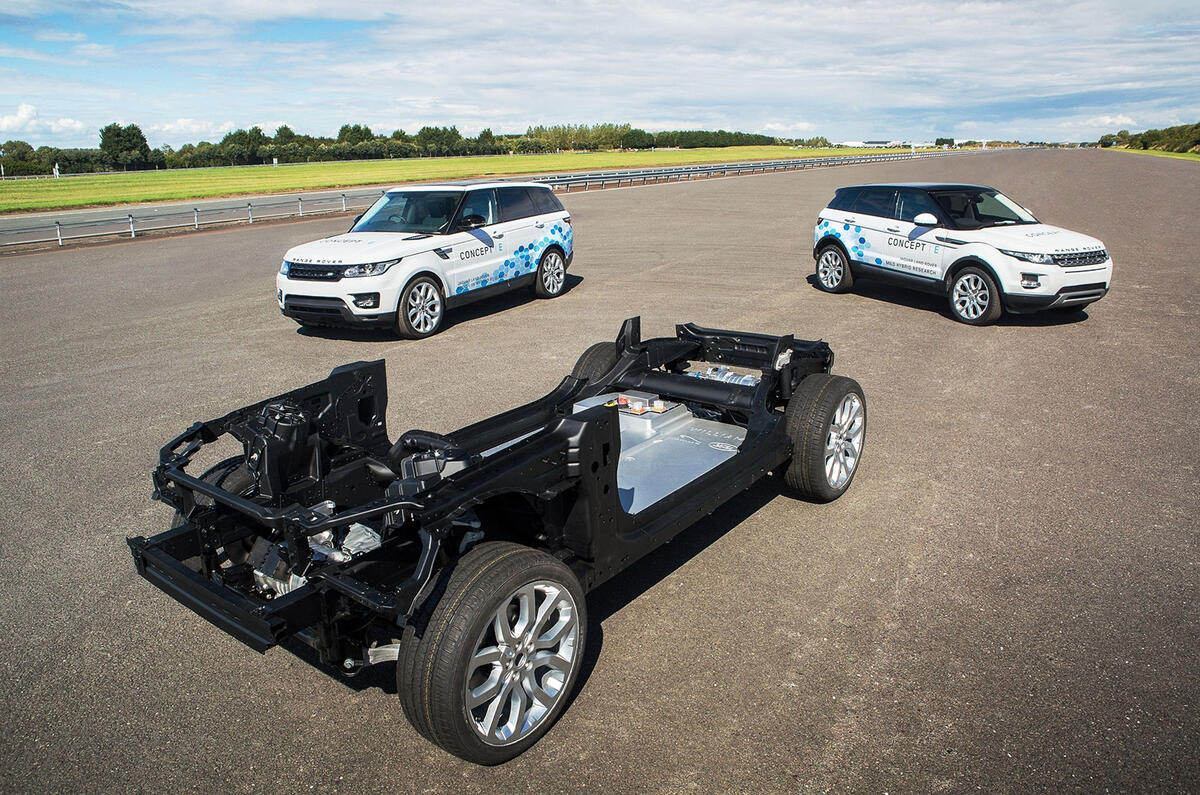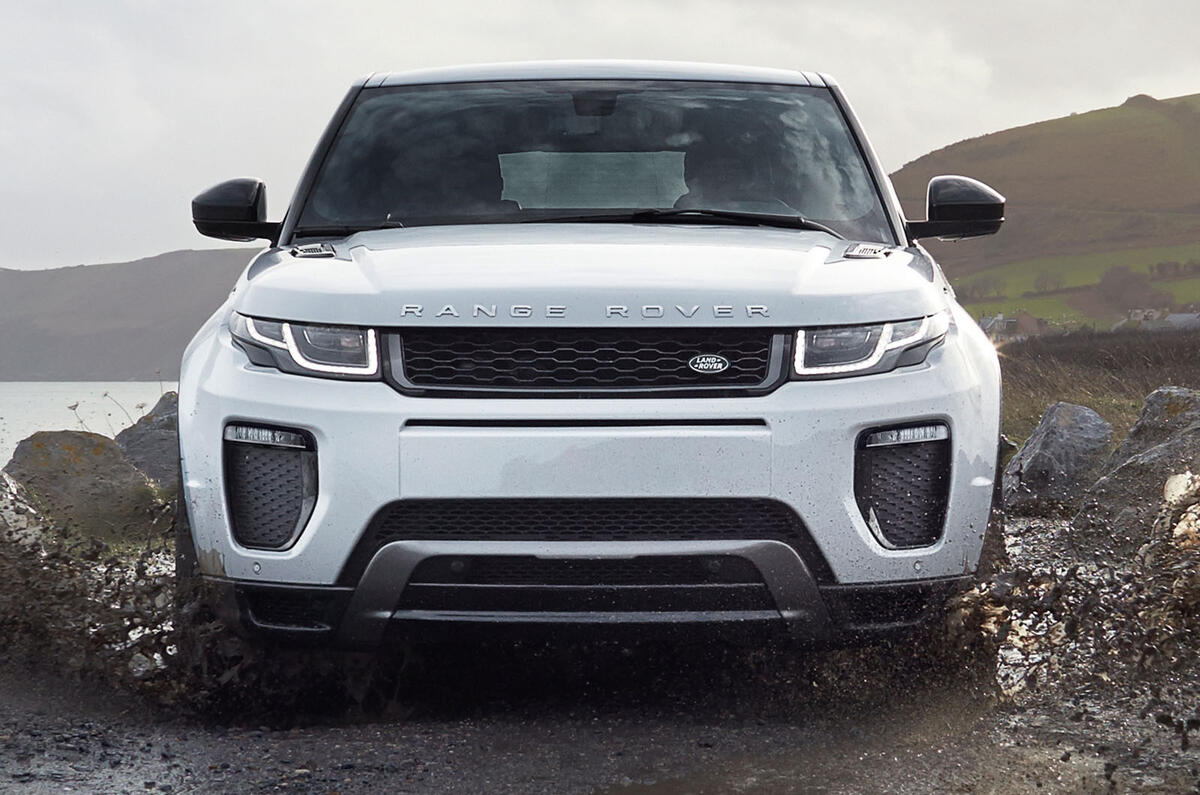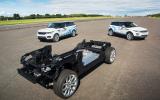Jaguar Land Rover has revealed three technology demonstrators which give a look at its zero-emission and electric future.
The cars have been in development for the past two years and explore different battery-based options. JLR claims the batteries in question are twice as powerful and capable of producing twice as much torque as any in production today.
It also says they are designed to be integrated with any engine and transmission combination to create a mild hybrid or a plug-in hybrid, or used on their own for a battery-powered electric vehicle.
The first of the cars is called the Concept e MHEV. It is a mild hybrid based on a Range Rover Evoque and pairs a prototype 89bhp diesel engine and a 48V lithium ion battery pack.
The Concept e PHEV is a plug-in hybrid. The Range Rover Sport-based model uses a similar set-up to that of the mild hybrid but adds a much larger battery and a 296bhp petrol engine, which is also described as a prototype.
The battery is a 320V lithium ion unit located in the boot of the car, which uses the standard eight-speed automatic gearbox and retains the full-time four-wheel drive system. However, the 150kW electric motor is capable of replacing the starter motor.
The final concept is a bespoke model based on JLR’s new aluminium platform. Its 70kWh lithium ion battery powers an 85kW electric motor on the front axle and a 145kW motor on the rear axle.
A total of 12 partners worked on the Evoque E project. Officials say a key finding was the new modular design for an electric motor, which was designed and developed in-house.
The electric drive module is the core technology of the project. It's light and has around twice the power of today's electric motors. It's suitable for saloons, SUVs and other types of vehicles. It fits between the engine and the transmission and is suitable for transverse or longitudinal applications and any type of transmission.
Many of the technologies developed for the project could have future production applications. The engine in the mild-hybrid Evoque is a three-cylinder diesel research engine developed especially by JLR for this project. The two-speed transmission in the battery research vehicle would be suitable for a Land Rover application as it would aid with low-speed traction.
The brake-by-wire system offers exceptionally strong braking forces (up to 0.5g) and maximises the amount of energy recuperated into the battery pack. This in turn allows for a smaller and therefore lighter and less expensive battery pack to be used as more energy can be recovered.








Join the debate
Add your comment
Walked over
In a Range Rover, there is 6km of wiring, weighing 94kg.
Behind Telsa